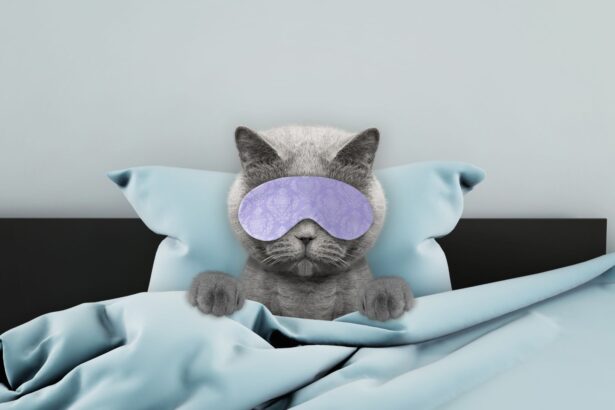Introduction
Why is chocolate dangerous for your cat? You love your little furball and want to give it a treat, but did you know that that delicious chocolate you love so much can be extremely dangerous for your feline companion? That’s right, our moustachioed friends don’t share our sweet tooth, and with good reason! Let’s find out together why this sweet treat can quickly turn into a nightmare, and how to effectively protect your cat’s health on a daily basis.
- Introduction
- Why is chocolate toxic for your cat?
- Theobromine: a hidden poison in chocolate
- Dark, milk or white chocolate: what are the real dangers?
- Symptoms of chocolate poisoning in cats
- What should you do if your cat has eaten chocolate?
- React quickly to protect your cat
- Veterinary treatments for chocolate poisoning
- Prevention: keep your cat away from chocolate
- Safe alternatives for spoiling your cat
- Raising awareness of the dangers of chocolate for cats
- Inform your family and friends to protect your cat
- Educating children about cat food safety
- Share your experience on social networks
- Conclusion
- FAQ: Frequently asked questions about the dangers of chocolate for cats
Why is chocolate toxic for your cat?
Theobromine: a hidden poison in chocolate
Chocolate contains a substance called theobromine, which is totally harmless to us, but highly toxic to our cats. Unfortunately, our beloved felines don’t have the enzymes needed to metabolize this molecule properly. The result? Rapid intoxication, even with a very small amount ingested.
A little anecdote: Did you know that just one square of dark chocolate can cause serious problems in an adult cat? Yes, it’s better not to tempt the devil!
Dark, milk or white chocolate: what are the real dangers?
- Dark chocolate is the most dangerous, containing the highest concentration of theobromine.
- Milk chocolate, although less concentrated, is also highly toxic.
- White chocolate contains little theobromine, but is not recommended due to its high sugar and fat content.
In short, no chocolate is really safe for your little moustachioed friend!
Symptoms of chocolate poisoning in cats
If your cat has eaten chocolate, here are the warning signs to look out for:
- Vomiting and diarrhea
- Muscle tremors
- Unusual hyperactivity and accelerated heart rate
- Convulsions in severe cases
Without rapid intervention, poisoning can unfortunately be fatal. So be on the lookout!
What should you do if your cat has eaten chocolate?
React quickly to protect your cat
First rule of thumb: don’t panic! Take a deep breath and contact your vet immediately. Try to estimate precisely the quantity and type of chocolate ingested, so that the professional can be better informed. A common mistake to be avoided at all costs: never try to make your cat vomit without medical advice, as you could aggravate the situation.
Veterinary treatments for chocolate poisoning
Your vet can administer a suitable treatment to limit theobromine absorption or induce vomiting safely. Temporary hospitalization may be necessary to monitor your cat’s vital functions. The sooner you act, the better your cat’s chances of a full recovery!
Prevention: keep your cat away from chocolate
- Always store chocolate in closed cupboards, out of your cat’s reach.
- Inform those around you about the dangers of chocolate to avoid accidents in the home.
- Be especially vigilant at parties or special events where chocolate is in abundant circulation.
Safe alternatives for spoiling your cat
Special treats for cats
Choose treats adapted to your cat’s specific nutritional needs. Choose natural products with no added sugar or artificial ingredients, and limit them to no more than 10% of your cat’s daily calorie intake. Your cat will thank you with purrs!
Healthy and tasty homemade recipes for cats
Why not make your own homemade treats with cat-friendly chicken, fish or vegetables? Be careful, however, to avoid toxic ingredients such as onions, garlic and grapes. Always consult your vet before introducing new recipes to your cat’s diet.
Discover our favorite homemade recipe in our article Easy homemade treats for greedy cats!
Games and cuddles: safe rewards
Rewards don’t have to be food! Offer your cat special moments of interactive play and affectionate cuddles. Stimulate him with a variety of toys to satisfy his natural hunting instinct and strengthen your bond.
Raising awareness of the dangers of chocolate for cats
Inform your family and friends to protect your cat
Explain clearly to your family and friends why chocolate is dangerous for your cat. Share accurate, easy-to-remember information about the risks associated with chocolate, and encourage them to take responsible action when they visit.
Educating children about cat food safety
Teach children never to give your cat chocolate or other dangerous foods. Explain the serious consequences this could have on your cat’s health. Involve them in the preparation of appropriate treats to raise their awareness.
Share your experience on social networks
Use your social networks to raise awareness of this little-known danger. Share practical advice, safe alternatives and engage in conversation with other cat lovers to spread the word.
Conclusion
Now that you know exactly why chocolate is dangerous for your cat, you’re better armed to protect your beloved companion. Discover even more practical advice and cat-safe gourmet ideas by exploring our other articles on Pawtounes.fr!
FAQ: Frequently asked questions about the dangers of chocolate for cats
How much chocolate is dangerous for my cat?
Even a small amount can be toxic. Contact your vet immediately if ingested.
My cat has eaten chocolate. What should I do immediately?
Call your vet immediately and tell him exactly how much and what type of chocolate you ate.
Is chocolate safe for cats?
No, no chocolate is safe. Choose treats specially designed for cats.
What other common foods are toxic for my cat?
Onions, garlic, grapes, avocado, caffeine, alcohol and some artificial sweeteners are also toxic for your cat.








